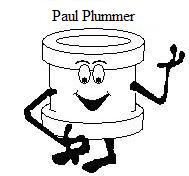Design team members: Stephanie Chow, Robert Lovell and Sara Raichyk
Supervisor: Professor Christine Moresoli
Background
We are three engineering students from the University of Waterloo working hard to create a fun and hands-on activity for Grade 8 science. Teachers need a product that allows students to explore and learn about fluid mechanics, an area important in many industries such as aeronautics, engineering, meteorology, and ocenography1. We are consulting with middle school science teachers and Professional Engineers to ensure our product is appropriate and authentic.
Appropriate means that it achieves objectives set forth by the Ontario Science and Technology Curriculum, it is easy for teachers to implement in their classrooms, and it is set to a suitable learning range for Grade 8 students.
Authentic means that the activity is reflective of real-world systems and the problem solving skills gained by the student are transferable.
Project description
We are inventing a fun and interactive learning activity to be used by Grade 8 science classes. Students will be flooded with excitement when building a mini water network, while simultaneously learning important water properties through hands-on discovery and peer discussion. We are also designing colourful and dynamic software modules using Adobe Flash for complementary guided learning.
The
culminating
hands-on
activity
consists
of
students
working
in
teams
to
design
and
build
a
water
distribution
network
for
a
mini
village,
complete
with
model
houses,
farms,
factories,
and
a
water
tower.
Prior
to
this
final
activity,
students
will
complete
smaller
guided
activities
to
gain
an
understanding
of
relevant
water
properties.
Students
will
dive
right
in
to
software
modules
with
useful
themes
like:
- How does water get to my faucet?
- Why is water important?
- What happened in Walkerton in 2000?
- Pressure and flow: How does water go?
These four modules are guaranteed to be informative and exciting, with Paul Plummer guiding the student through the lessons and evaluative quizzes.

Design methodology
As 4th year Systems Design Engineering students, we have plenty of practice with product design. We are following a standard User-Centred Spiral methodology, where we will complete 3 design cycles over the 8-month project. Every cycle has four stages: analysis, prototype design, implementation, and evaluation. Our first cycle has been completed and our low-fidelity prototype received positive feedback from our advisory panel. We are currently designing our second-generation prototype which will be tested in a Grade 8 classroom in January.
We are consulting weekly with our project advisor, Professor Moresoli, who is a researcher for the Centre for Research in Youth, Science Teaching and Learning (CRYSTAL), as well as a chemical engineering professor. We have sought guidance from Professor Johnson, a fluid mechanics professor to help us with our analysis of the water system, which we are modelling mathematically using Maple. We met with Professor McKillop, an expert on urban water systems design to verify our understanding of water systems. Additionally, we meet regularly with several middle school teachers to get feedback.
1 Ontario Ministry of Education and Training, The Ontario Curriculum Grades 1-8, Science and Technology, Toronto, 1998